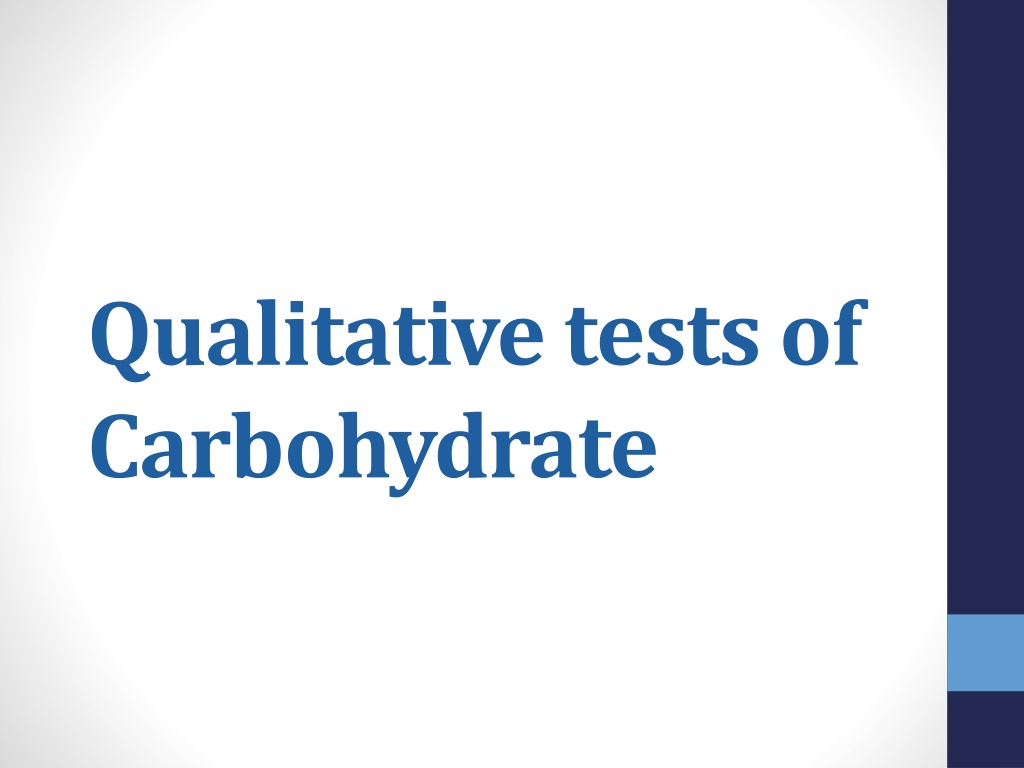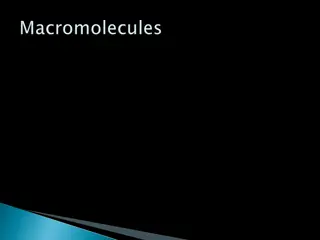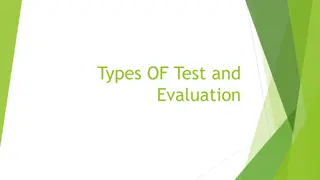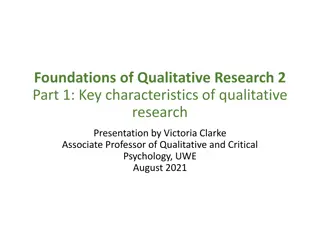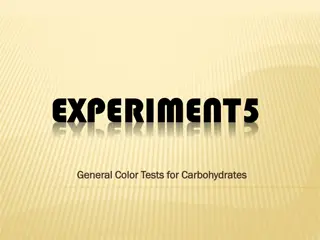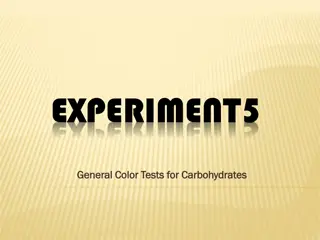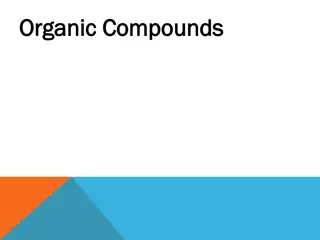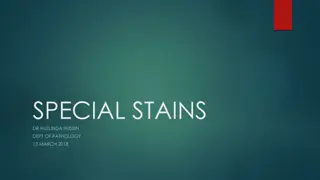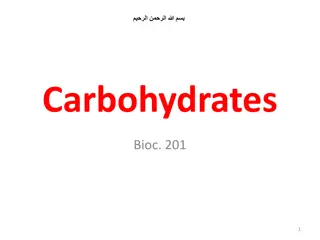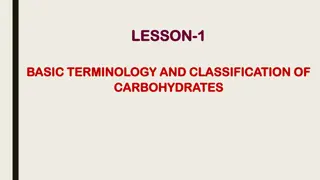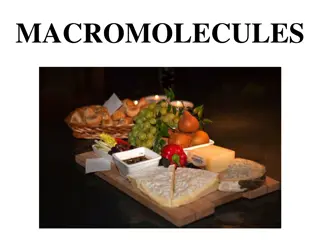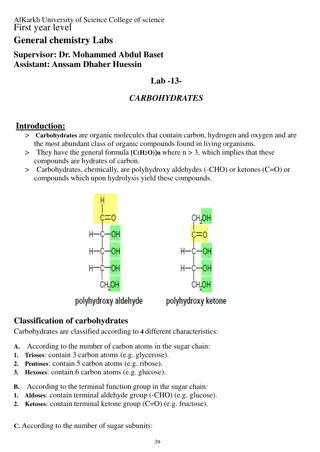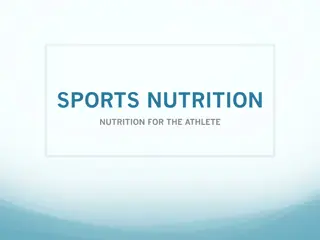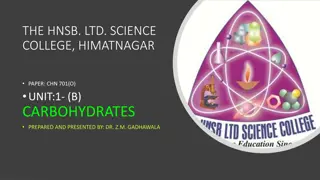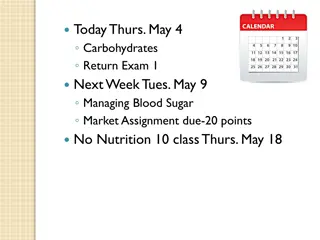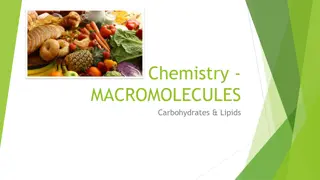Understanding Qualitative Tests of Carbohydrates
Carbohydrates are vital sources of energy in living organisms and play a significant role in cell structures. This article covers the classification of carbohydrates, including monosaccharides and polysaccharides, and explores their solubility properties. It also delves into the distinction between reducing and non-reducing sugars and explains the Molisch test used for carbohydrate identification. The principle behind the Molisch test involving H2SO4 is outlined for a better understanding of how different carbohydrates react in the test.
Download Presentation

Please find below an Image/Link to download the presentation.
The content on the website is provided AS IS for your information and personal use only. It may not be sold, licensed, or shared on other websites without obtaining consent from the author. Download presentation by click this link. If you encounter any issues during the download, it is possible that the publisher has removed the file from their server.
E N D
Presentation Transcript
Qualitative tests of Carbohydrate
Introduction Carbohydrates are the key source of energy used by living things. Also serve as extracellular structural elements as in cell wall of bacteria and plant. Carbohydrates are defined as the polyhydroxy aldehydes or polyhydroxy ketones. H O C H C OH HO C H Most , but not all carbohydrate have a formula (CH2O)n (hence the name hydrate of carbon) In human body, the D-glucose is used. Simple sugars ends with ose H C OH H C OH CH2OH D-glucose
Classification 1-Simple sugar: (one unit) Monosaccharides contain one monosaccharide unit. 2-Complex sugar (more than one): Disaccharides contain two monosaccharide units. - Oligosaccharides contain 3-9 monosaccharide units. - Polysaccharides can contain more than 9 monosaccharide units. - Complex carbohydrates can be broken down into smaller sugar units through a process known as hydrolysis.
Monosaccharide They can be classified by the number of carbon atoms trioses (C-3) tetroses (C-4) pentoses (C-5) hexoses (C-6) heptoses (C-7) also be classified as ketoses or aldoses. A ketose contains a carbonyl group attached to two R groups having one or more hydroxyl groups. H O C H C OH HO C H H C OH An aldose contains terminal aldehyde group in addition to R group containing -OH. H C OH CH2OH D-glucose aldose
Solubility Monosaccharide and disaccharide can be dissolved freely in water because water is a polar substance, while polysaccharide cannot be dissolved easily in water, because, it has high molecular weight , which give colloidal solutions in water soluble.
Reducing and non reducing sugars Reducing and non reducing sugar :If the oxygen on the anomeric carbon of a sugar is not attached to any other structure, that sugar can act as a reducing agent and is termed a reducing sugar. http://www.chem.latech.edu/~upali/chem102/imageB4I.JPG v Anomeric carbon v reducing Non- reducing
Molisch test This test is specific for all carbohydrates. Monosaccharide gives a rapid positive test, Disaccharides and polysaccharides react slower. Objective: To identify the carbohydrate from other macromolecules lipids and proteins.
Principle: The test reagent(H2SO4) dehydrates pentose to form furfural and dehydrates hexoses to form 5- hydroxymethyl furfural. The furfural and 5- hydroxymethyl furfural further react with -naphthol present in the test reagent to produce a purple product. http://faculty.ksu.edu.sa/27502/picture%20library/Molisch%20Test.JPG -naphthol Purpel color furfural -naphthol Purpel color 5- hydroxymethyl furfural
Method 1-Two ml of a sample solution is placed in a test tube. 2-Two drops of the Molisch reagent (which -napthol in 95% ethanol) is added. 3-The solution is then poured slowly into a tube containing two ml of concentrated sulfuric acid so that two layers form, producing violet ring appear as liaison between the surface separations. Tube observation 1-glucose 2-ribose 3-sucrose 4-starch
Benedict's test Benedict's reagent is used as a test for the presence of reducing sugars. All monosaccharides are reducing sugars; they all have a free reactive carbonyl group. Some disaccharides have exposed carbonyl groups and are also reducing sugars. Other disaccharides such as sucrose are non- reducing sugars and will not react with Benedict's solution. Large polymers of glucose, such as starch, are not reducing sugars Objective: To distinguish between the reducing and non- reducing sugars.
Benedict's test Principle: The copper sulfate (CuSO4) present in Benedict's solution reacts with electrons from the aldehyde or ketone group of the reducing sugar in alkaline medium. Reducing sugars are oxidized by the copper ion in solution to form a carboxylic acid and a reddish precipitate of copper oxide. sucrose lactose glucose reddish precipitate of copper
One ml of a sample solution is placed in a test tube. Two ml of Benedict's reagent is added. The solution is then heated in a boiling water bath for five minutes. A positive test is indicated by: The formation of a reddish precipitate. Tube observation 1-glucose 2-sucrose 3-lactose
Barfoeds Test This test is performed to distinguish between reducing monosaccharides, reducing disaccharides and non reducing disaccharides. Objective: To distinguish between mono- , di- and poly saccharides. Principle: Barfoed s test used copper (II) ions in a slightly acidic medium Reducing monosaccharides are oxidized by the copper ion in solution to form a carboxylic acid and a reddish precipitate of copper (I) oxide within three minutes. Reducing disaccharides undergo the same reaction, but do so at a slower rate. The nonreducing sugars give negative result.
Barfoeds reagent, cupric acetate in acetic acid , so in acidic medium , disacchride is a weaker reducing agent than monosacchride, so mono sacchride will reduce the copper in less time.
Place one ml of a sample solution in a test tube. Add 3 ml of Barfoed's reagent (a solution of cupric acetate and acetic acid. Heat the solution in a boiling water bath for 6 minutes(after the 3 min check the tubes). Tube observation 1-glucose 2-sucrose 3-lactose
Bials Test This test is used to distinguish between pentose and hexose monosacharides. Objective: To distinguish between pentose monosaccharide and hexose monosaccharide
Principle: Bials test uses concentrated HCl as a dehydrating acid and orcinol + traces of ferric chloride as condensation reagent. The test reagent dehydrates pentoses to form furfural. Furfural further reacts with orcinol and the iron ion present in the test reagent to produce a bluish or green product, while hexoses yield muddy-brown to grey condensation product.
Put 2 ml of a sample solution in a test tube. Add 2 ml of Bial's reagent (a solution of orcinol, HCl and ferric chloride) to each tube. Heat the tubes gently in hot water bath. If the color is not obvious, more water can be added to the tube. Tube observation 1-glucose 2-ribose 3-fructose
Seliwanoff's Test This test is used to distinguish between aldoses (like glucose) and ketoses (like fructose). Objective: To distinguish between aldose and ketone sucrose.
Principle: Seliwanoff's Test uses 6M HCl as dehydrating agent and resoncinol as condensation reagent. The test reagent dehydrates ketohexoses to form 5- hydroxymethylfurfural. 5-hydroxymethylfurfural further condenses with resorcinol present in the test reagent to produce a cherry red product within two minutes. Aldohexoses react to form the same product, but do so more slowly giving yellow to faint pink color.
One half ml of a sample solution is placed in a test tube. Two ml of Seliwanoff's reagent (a solution of resorcinol and HCl) is added. The solution is then heated in a boiling water bath for two minutes. Tube observation 1-glucose 2-fructose
Test objective Molisch test To identify the carbohydrate from other macromolecules lipids and proteins Benedict's test Benedict's reagent is used as a test for the presence of reducing sugars. Barfoed s Test to distinguish between reducing monosaccharides, reducing disaccharides and non reducing disaccharides. Bial s Test To distinguish between pentose monosaccharide and hexose monosaccharide Seliwanoff's Test To distinguish between aldose and ketone sugars
